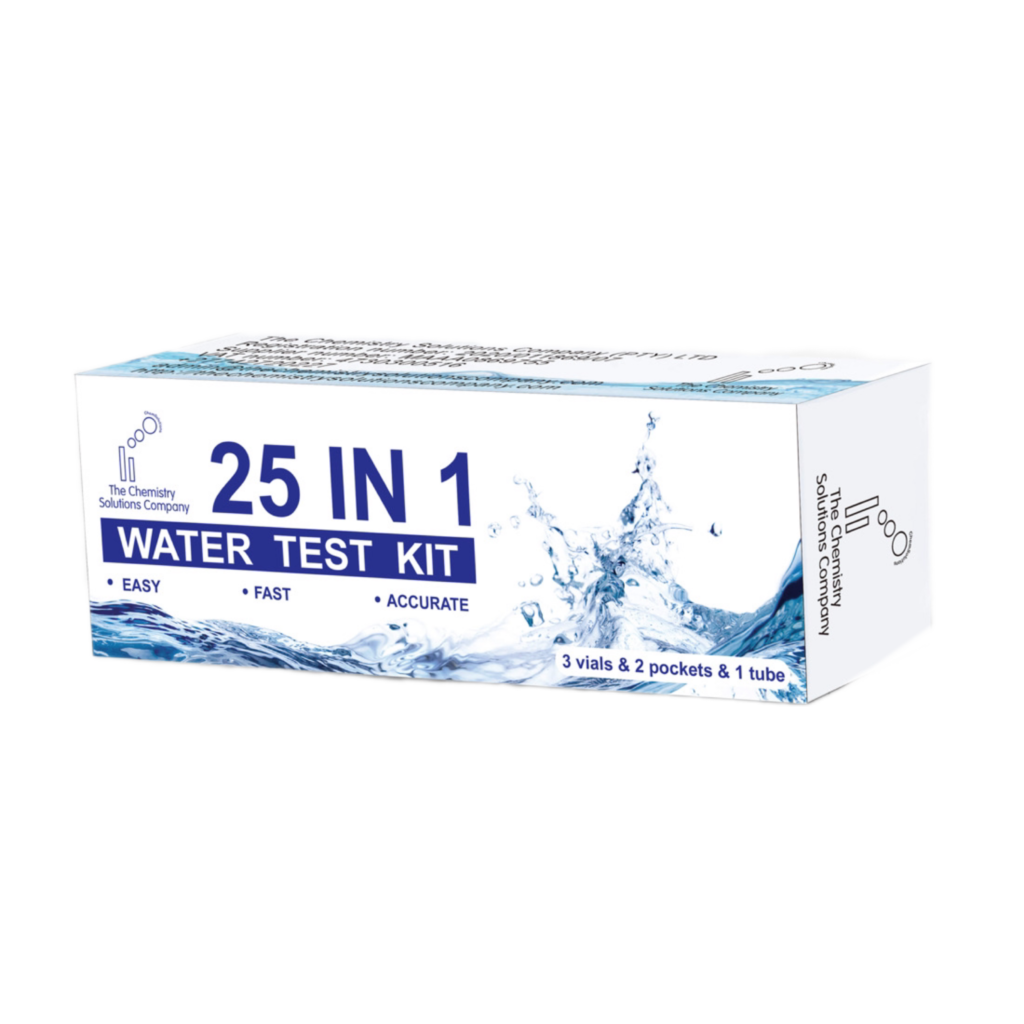Testing your water quality is very important. One affordable way to do it is to use a portable water testing kit. They are easy to use and a cheaper way of knowing what is in your water. They come in a variety of forms testing for chemical, physical and biological properties of water. Here are a few steps to take to have the best experience.
Testing your water at home
- Understand your water source
- Choose a kit
- Compare your results to SANS 241, EPA or WHO standards
1. Understand your water source
When choosing a water testing kit, consider the source of water. Some kits are suitable for only tap water, borehole water or seawater. If you understand the general composition of your water source, this helps you pick a water testing kit with the right limits.
The Chemistry Solutions Company water testing kits are designed for all water sources. They can be used for drinking water sources such as bottled water, tap water and borehole water. They can also be used for seawater and wastewater.
2. Choose a kit
A majority of the water testing kits are designed for one-time use and usually one test only in a kit. There are options that usually have 100 tests in a kit. Additionally, most kits give a range of results instead of an exact number, you need to consider getting a kit that accommodates a wide range.
To make sure you get the most out of your kit, check if your kit covers your needs. Below is a checklist for drinking water:
- Bacteria test (e.g. E.coli, coliforms, fungus)
- Physical test (e.g. pH, total dissolved solids, electrical conductivity, oxidative reductive potential)
- Chemicals (macro (e.g. Magnesium and Calcium) and micro (e.g. heavy metals like Mercury and Arsenic) determinants)
You can ensure the accuracy of your results by:
- Reading the instructions carefully.
- Washing your hands and using gloves.
- Only open testing strips moments before use.
- Using a timer.


3. Compare your results to recommended standards
After performing your test, compare your results to a SANS 241, EPA or WHO standards. This will allow you to check if the levels of ions in your water do not exceed the recommended limits. For example, no E.coli bacteria should be detected in your water. Its presence indicator contamination with faecal matter.